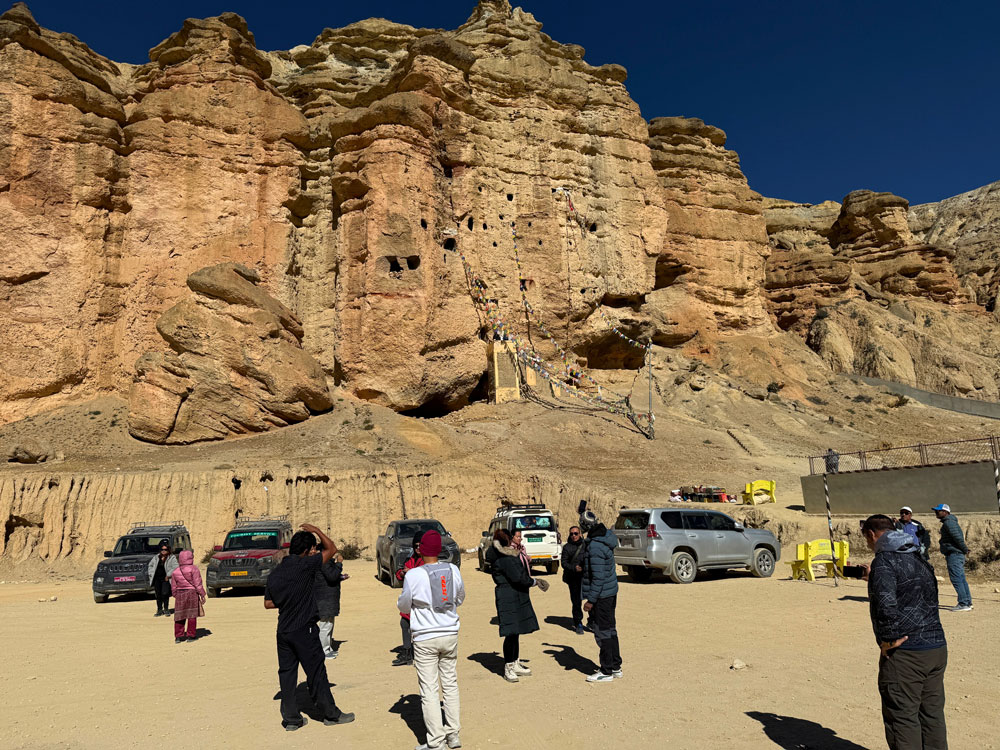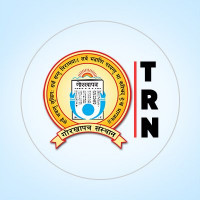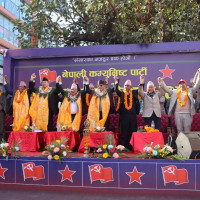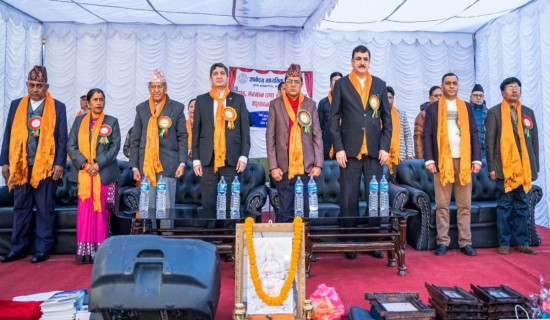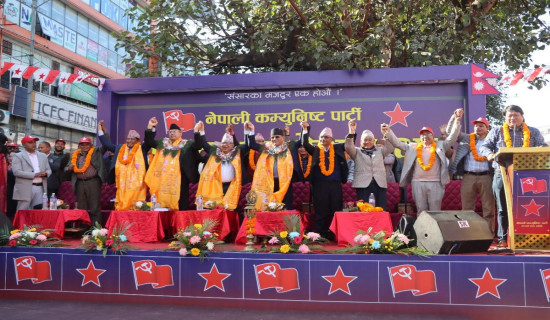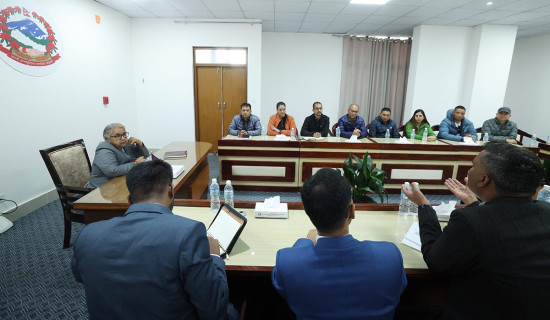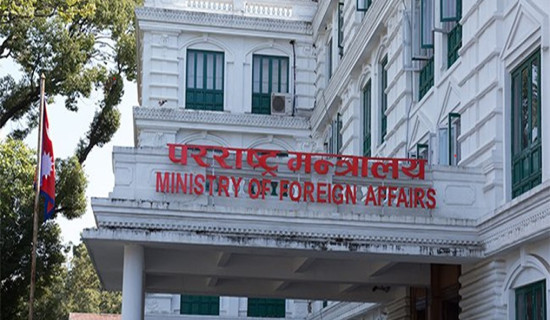- Monday, 1 December 2025
Visitors flock to Mustang's Jong Cave
By Harikrishna Sharma
Muktinath, Oct. 28: First-time visitor Bhimnath Sharma was left astonished upon seeing the Sija Jong’ Cave, marked by distinctive holes in the mountain wall of Lomanthang Rural Municipality-1, Mustang. This unique and captivating six-storey cave, including the ground floor, continues to fascinate tourists who ascend its narrow staircases.
Situated at an altitude of 3,785 metres above sea level, the cave comprises 50 interconnected rooms, which visitors can explore freely. Historically, it is said to have contained a total of 108 rooms when first constructed.
Another visitor, Suresh Dhungana, remarked, “Inside the cave, we could see numerous scenes carved into the mountain. It is a remarkable gift from ancient times. Every tourist who comes here feels as though they have entered another world.”
According to 60-year-old local resident Puncho Gurung, villagers lived in the clay-carved cave around 2,000 years ago after Tibetan raiders attacked and looted their settlements. “The items that the villagers once hid inside the cave have now disappeared,” said Gurung, who now sells tickets to visitors.
Inside, there are rooms that once served multiple purposes, areas for cooking, sleeping, guarding, worshipping, and storing essentials. On the third floor, several wooden and clay utensils remain intact. In one room, visitors can still see ancient objects such as glassware, earthen pots used for tea, shoes, and other everyday items. Blackened walls and ceilings still bear the marks of smoke from fires once lit for warmth and cooking.
No formal study or research has been conducted to determine the exact age of the cave or its artefacts. Tshiring Utin Gurung, ward member of Lomanthang-1, and a tourism entrepreneur, explained that each floor has a central passageway and small windows overlooking adjacent rooms and the nearby Choser settlement. While tourists can safely climb up to the third floor, reaching the fourth and fifth floors involves some risk.
According to Gurung, the cave was originally constructed to protect the community and their possessions from enemies, but it has now become an important source of income for locals. “Tourism has flourished due to visitors coming to see the cave, and the income from ticket sales is being used for the maintenance of the monasteries and the cave itself,” he said.
Local legend recounts that even when the invaders sealed the entrance for a long time, the villagers refused to surrender. As a result, the people of Choser consider this cave a symbol of their ancestors’ bravery.
The Archaeological Observation and Entry Management Committee charges each Nepali visitor Rs. 100. But each foreign tourist has to pay Rs. 1,000 to visit the centuries-old cave and nearby monastery.
According to ticket counter staff member Tamding Gurung, between 150 and 500 tourists visit the cave daily during the months of April, May, October, and November. “After Tihar, the number of visitors is so high that we sometimes have to hold the queue outside,” he added.
This year, local contractor Lappa Tassi secured a tender worth Rs 2.3 million through the committee. Of this, 25 per cent will be allocated for the maintenance of Lo Garfu Gumba and Lo Nifu Gumba, 18 per cent for Chenpa Konchokling Gumba, and 23 per cent for Sija Jong Gumba. Additional support will be provided to local youth clubs and mothers’ groups, according to Rural Municipality Chairman Tassi Nharbu Gurung.
“The famous cave represents the identity of Upper Mustang residents. The struggle of our ancestors to protect their land is preserved within its walls,” said Chairman Gurung.
The Jong Cave complex is accessible by vehicle via the Lomanthang–Nechung section of the Korala Road from Jomsom, the district headquarters of Mustang. It is estimated that around a thousand large and small caves exist across Lomanthang and Lo-Ghekar Damodarkunda Rural Municipalities in Upper Mustang.

